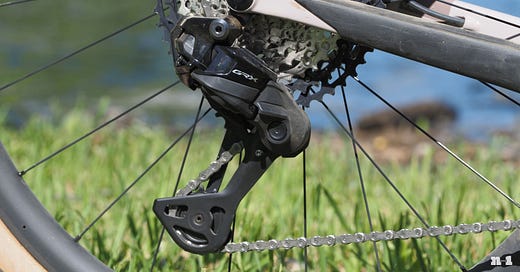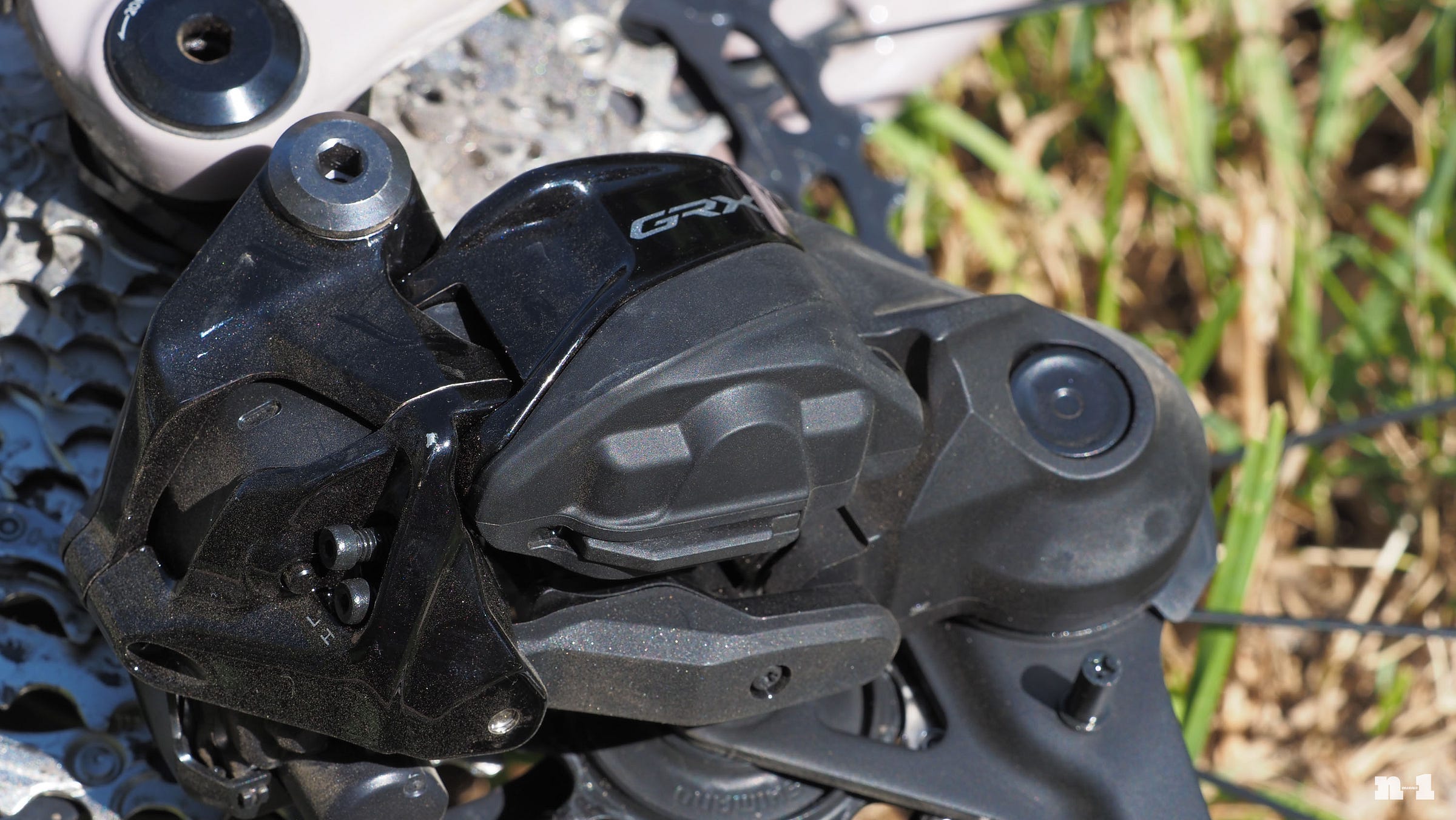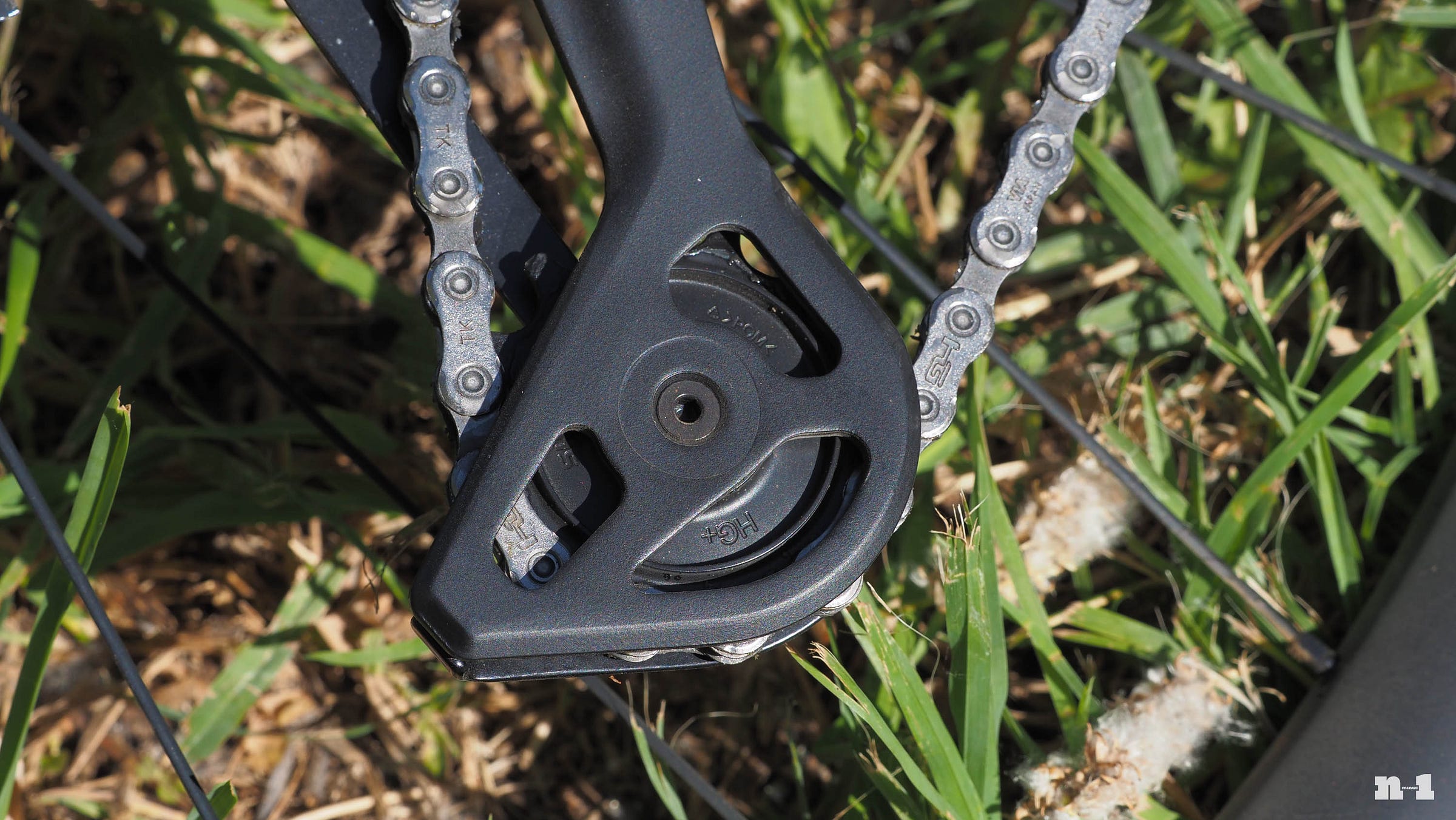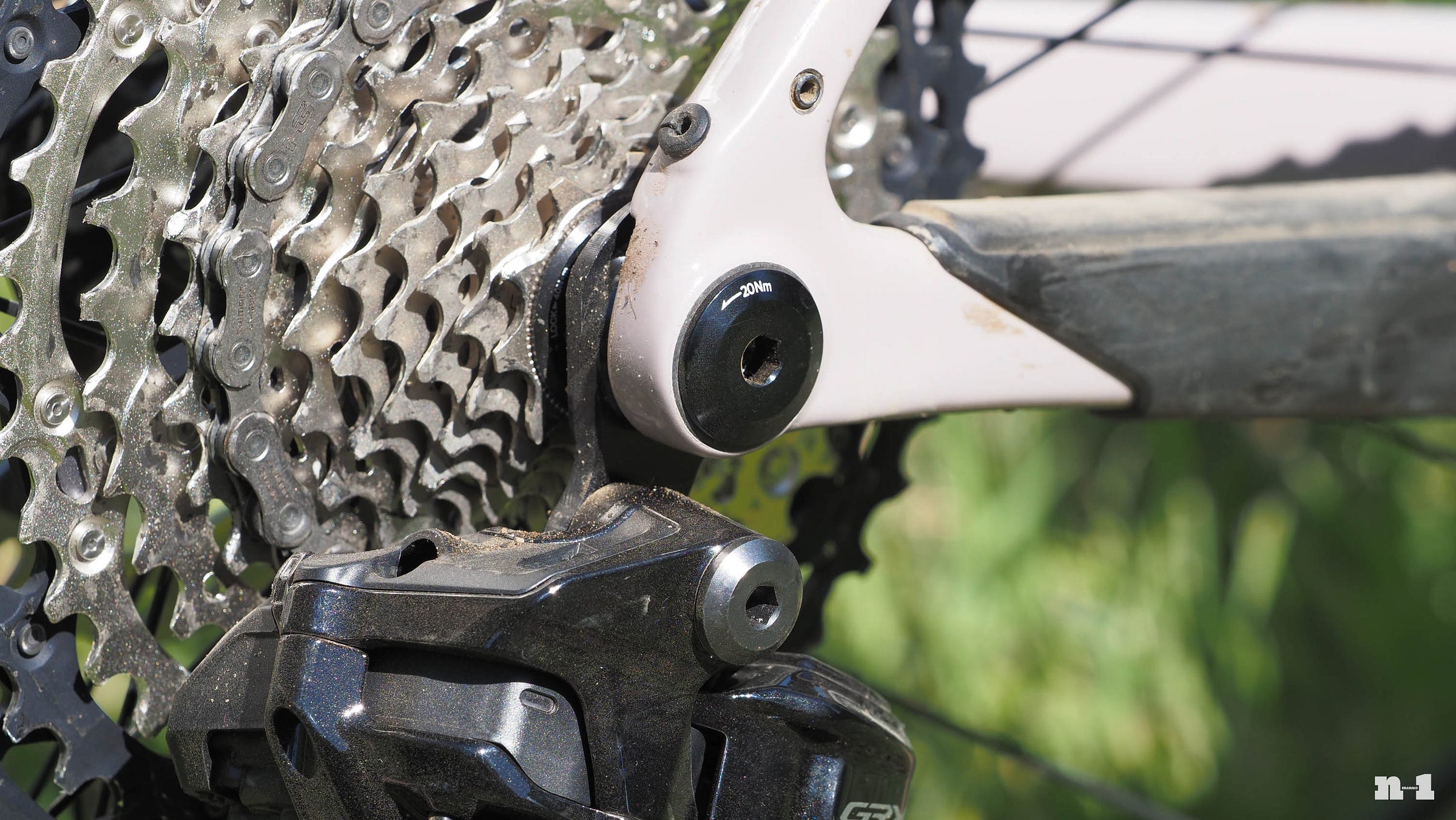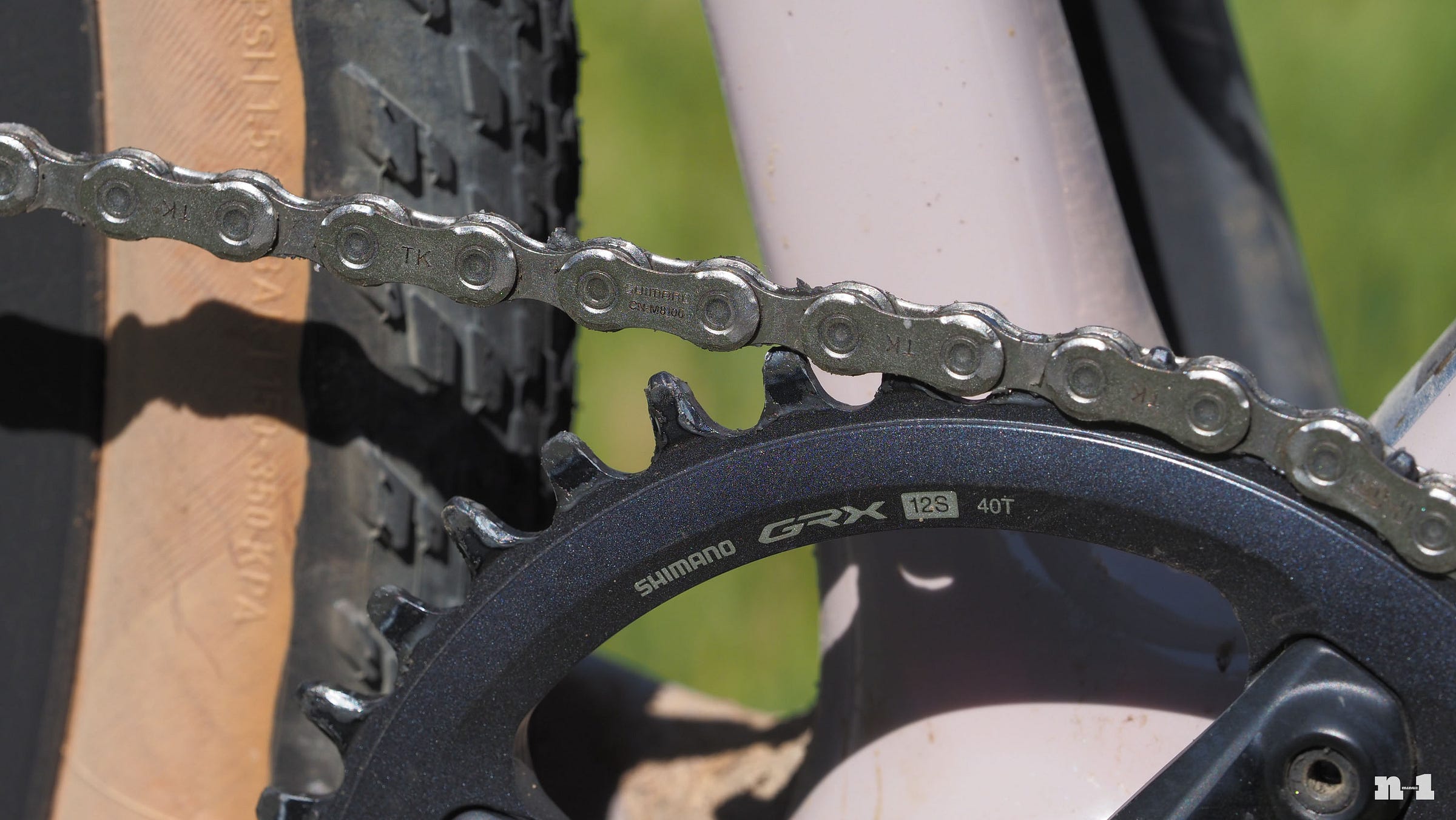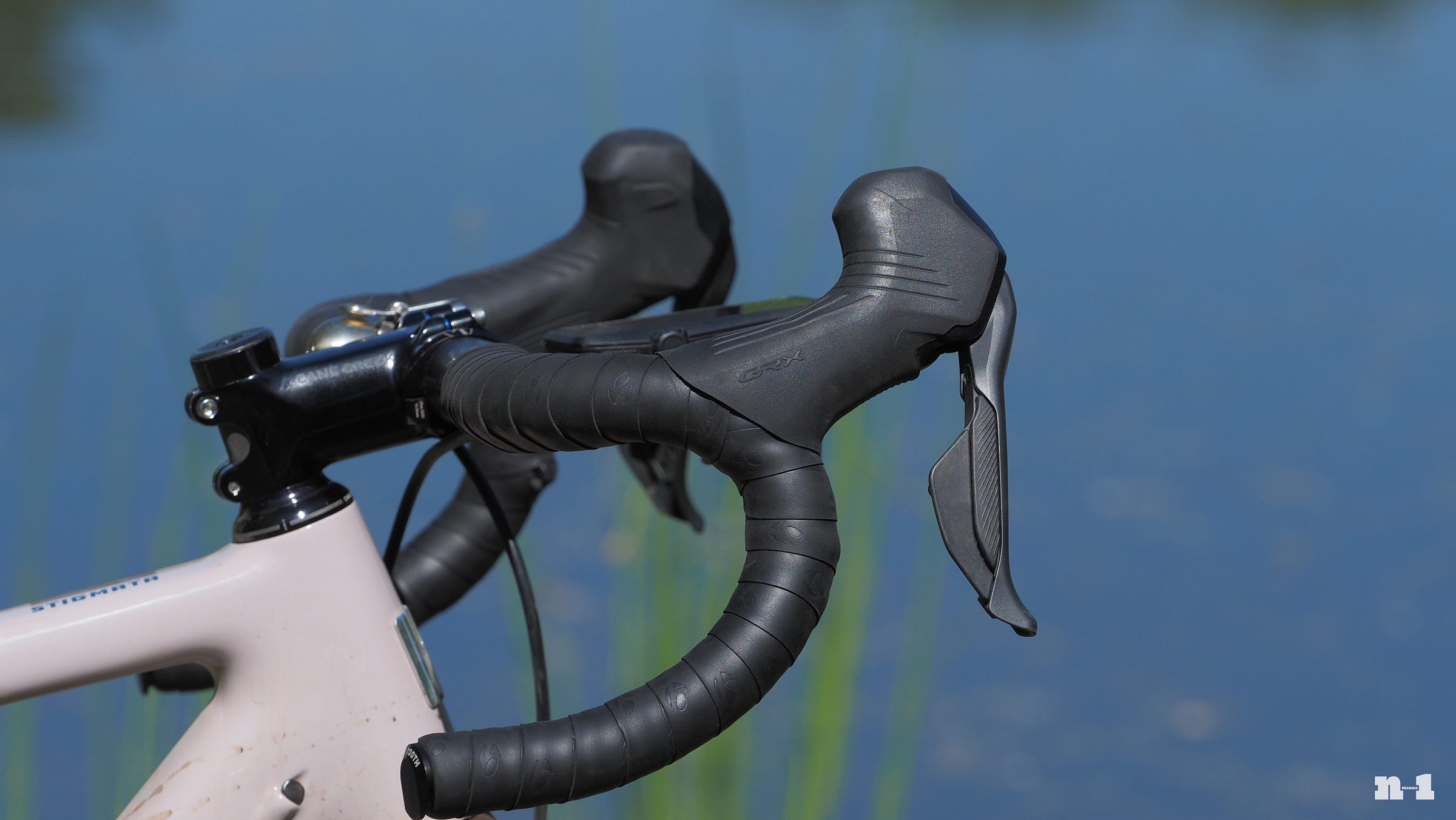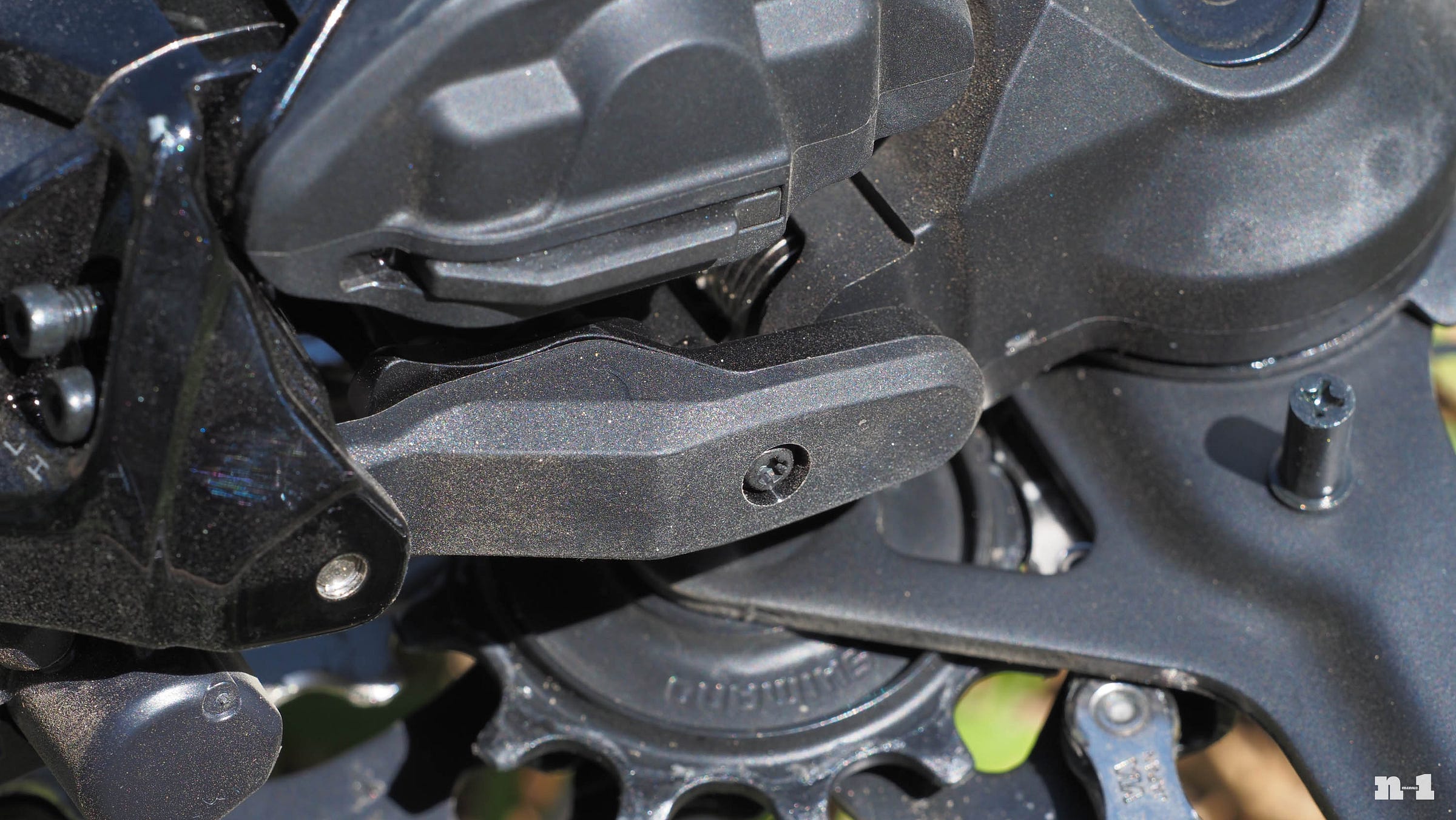It took much longer than most of us expected, but Shimano has finally – finally! – introduced a 1x version of its GRX Di2 electronic gravel groupset. I’ve been riding it for the last few weeks and it certainly ticks a lot of boxes: fully wireless operation, lightning-fast shifting, some good cassette choices, typically Shimano-esque levels of smoothness, easy setup, broad compatibility with other components, and some intriguing new features borrowed from the company’s recently introduced wireless mountain bike bits.
Yet for all that the new 1x version of GRX Di2 gets right, did Shimano get enough right to restore its position as a frontrunner, or is it more a matter of too-little-too-late?
I’m not so sure.
A little bit of this, a little bit of that
Many wondered what the holdup was on 1x when Shimano introduced its latest GRX Di2 groupset. That launched in May 2024 with a new semi-wireless architecture, and while that stuff is undeniably outstanding, it was only offered in a 2x12 gearing configuration whereas SRAM had already gone all-in on the more popular 1x12 wireless format three years earlier with its XPLR family of gravel components.
The only major thing GRX fans were waiting on was a 1x-compatible Di2 derailleur, but with Shimano recently announcing not just one, but three different wireless electronic mountain bike rear derailleurs within the past couple of weeks, that puzzle is now complete.
Much like the GRX clipless pedals, the new 1x-specific GRX Di2 RD-RX827 rear derailleur is 100% identical to Shimano’s Deore XT Di2 rear derailleur save for different graphics and finishes. It’s fully wireless with both ANT+ and Bluetooth functionality, the linkage pivots are widely spaced for durability and stiffness (an important trait for shifting precision), and Shimano’s long-standing pulley cage clutch has been traded for an extra-strong double spring arrangement that the company says is just as good at squelching chain slap, but with a much lower-profile shape that you’re less likely to smash into a rock.
Despite some folks predicting the opposite – and despite more frames moving in this direction – Shimano hasn’t followed SRAM’s lead in adopting a UDH-style direct mount interface. The GRX Di2 1x rear derailleur bolts to a standard hanger just as Shimano has (almost) always done, which will undoubtedly be a boon for anyone looking to upgrade to a wireless electronic 1x system but doesn’t have a UDH-compatible frame (and doesn’t want to buy one). Keep in mind, too, that Shimano’s new stuff will still on a UDH-equipped frame; you just need the separate hanger.
Of course, this still leaves the traditional derailleur hanger as the weak link in the system when it comes to impact from a crash, though Shimano contends it’s engineered a mechanism to prevent damage regardless.
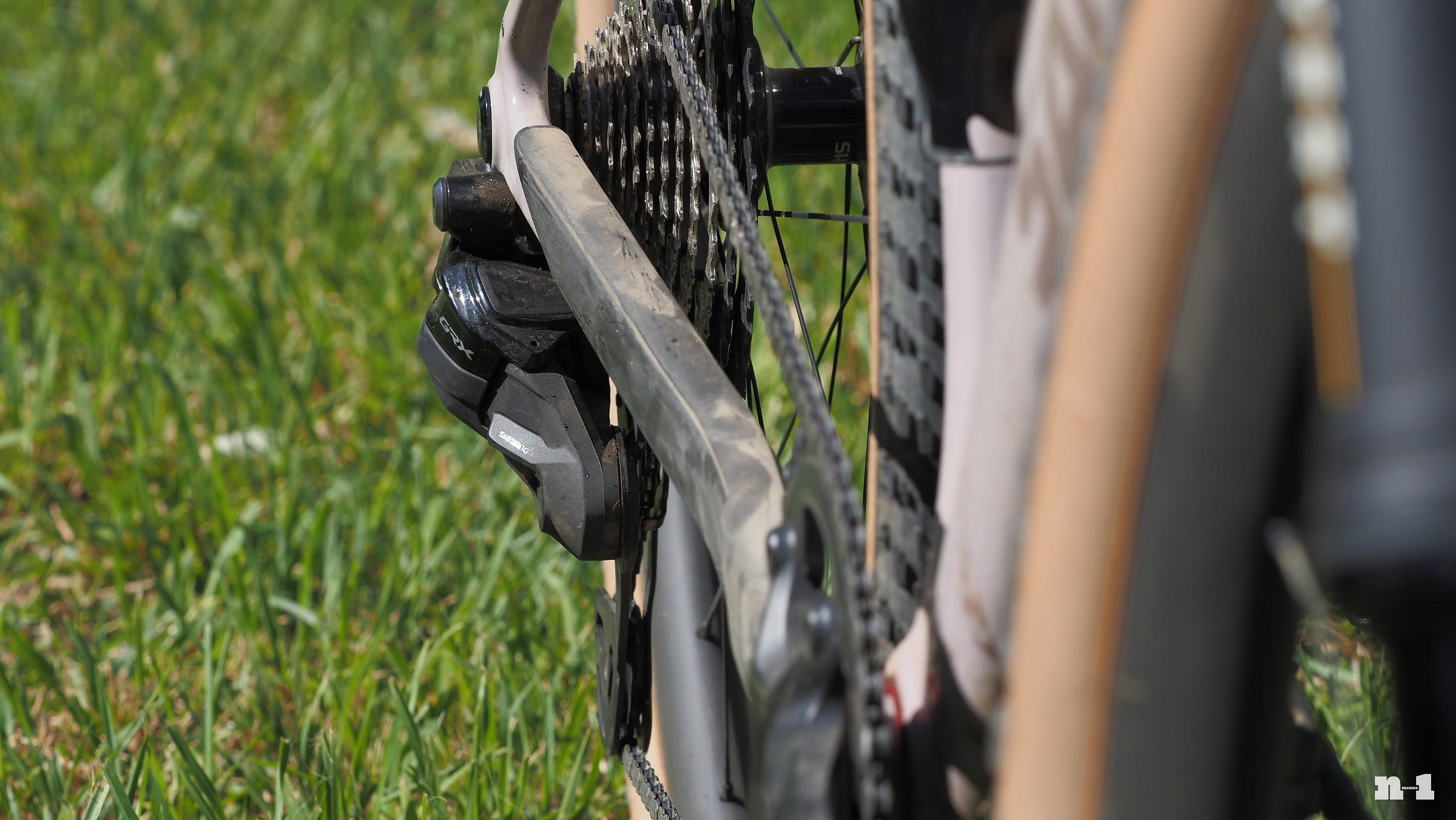
The derailleur’s low-profile design is the first line of defense, but Shimano has also incorporated something called the Automatic Impact Recovery Function where the motor disengages from the linkage during an impact and then automatically re-engages afterward. Riders might momentarily experience a downshift as a result, but Shimano’s position is that this movement helps to absorb the blow instead of something breaking or bending (including the hanger). Unlike the crash recovery mode that Shimano has used on earlier Di2 rear derailleurs, this one doesn’t require any effort on the part of the rider at all; everything happens on its own. Moreover, the derailleur is still free to rotate about its mounting bolt, offering a second mechanism to help absorb impact energy.
The 310 mAh battery has a claimed run time of 750-1,000 km – roughly the same as AXS – and also like SRAM, it has to be removed for charging. But whereas SRAM mounts its AXS batteries up near the rear dropout, Shimano tucks the GRX Di2 battery in between the parallelogram links. Holding the battery in place is a sliding hatch with a safety lock to prevent it from coming off inadvertently. The hatch is plastic, but notably more substantial than the rather delicate latches that SRAM uses.
Down below, the aluminum cage plates secure 13-tooth upper and lower pulleys, both of which rotate on sealed cartridge bearings. Shimano doesn’t bother with any holes on either one, saying the solid-disc construction is inherently more immune to sticks or other debris getting jammed in there (“It’s not magic,” Shimano’s web page cheekily describes, in reference to SRAM’s so-called Magic Pulley design).
In terms of gearing, Shimano has essentially gone all-in on mullet – at least for 1x gravel – offering the new GRX Di2 RD-RX827 rear derailleur in a single “SGS” long cage length for use with its 12-speed 10-51T mountain bike cassettes. That said, there’s broad cross-compatibility within Shimano’s latest 12-speed wireless systems. Riders who don’t want or need that much range could also go with Shimano’s 10-45T cassette, but they’d need to go with an XT Di2 or XTR Di2 rear derailleur, both of which are available with a medium “GS” cage length. Whichever way you go, you’ll need Shimano’s newer Microspline freehub body.
If you haven’t caught on yet, this level of cross-compatibility is nice to see, but it does mean Shimano has stuck to 12-speed.
Speaking of which, the rear derailleur is the only major new addition here. RD-RX827 connects to existing current-generation GRX Di2 wireless shift-brake levers, or if you’re looking to save about US$250 (and a bit of weight), there’s also a new 1x-specific BL-RX825-L left-hand lever. That one does without any of the electronic guts but is otherwise ergonomically identical to the standard GRX Di2 2x control. Alternatively, you could also use a GRX mechanical left-hand lever if you want integrated dropper seatpost actuation, although the look and feel of the lever would be different. Regardless, ‘cross-style inline brake levers are compatible should you want the ability to brake while on the handlebar tops.
The rest of the bits are carried over from the existing GRX family. The 1x crankset features a narrow-wide chainring mounted to the same forged aluminum arms as 2x GRX electronic and mechanical groupsets, although that also means you’re stuck with the same limited options as before with only 170, 172.5, and 175 mm arm lengths, and either 40 or 42T chainrings (at least from Shimano). Likewise, the brake calipers and chain are unchanged.
In other words, should a current GRX Di2 2x12 user want to switch to 1x, all it’ll require is a rear derailleur (and battery, of course), a chainring, a cassette, perhaps a chain, maybe a freehub body, and some elbow grease.
Weights and prices
Official claimed weights and retail prices for Shimano GRX Di2 1x are as follows (sorry, Shimano wasn’t able to provide UK and EU pricing by the time this went live):
GRX Di2 BL-RX825-L brake lever with brake caliper: 395 g, US$345 / AU$530.
GRX Di2 ST-RX825 brake/shift lever with brake caliper: 415 g, US$595 / AU$560.
GRX Di2 RD-RX827 rear derailleur: 454 g, US$565 / AU$828.
GRX FC-RX820-1 crankset, 170 mm, 40T: 644 g, US$280 / AU$330.
Deore XT CS-M8200 cassette, 10-51T: 463 g, US$195 / U$285.
Deore XT CN-M8100 chain: 252 g, US$62 / AU$80.
RT-CL800 brake rotor, 160 mm, each, with lockring: 169 g, US$70 / AU$90.
BT-DN320 battery: 27 g, US$55 / AU$80.
EC-DN100 battery charger: US$45 / AU$70.
Total: US$2,282 / AU$2,943.
Ride report
Setting up the new GRX Di2 RX827 1x-specific rear derailleur is just as simple as I’d hoped it’d be (and it helped that I installed my test bits on my personal Santa Cruz Stigmata that was already equipped with GRX Di2 2x). Off came the chainrings, chain, cassette, battery, wires, and front derailleur clamp, and on went the new rear derailleur and Deore XT cassette. I also installed a new chain – mostly just so I didn’t have to deal with any potential wear issues – and since I didn’t have a Microspline freehub body for my old wheels, Shimano supplied a set of RX880s.
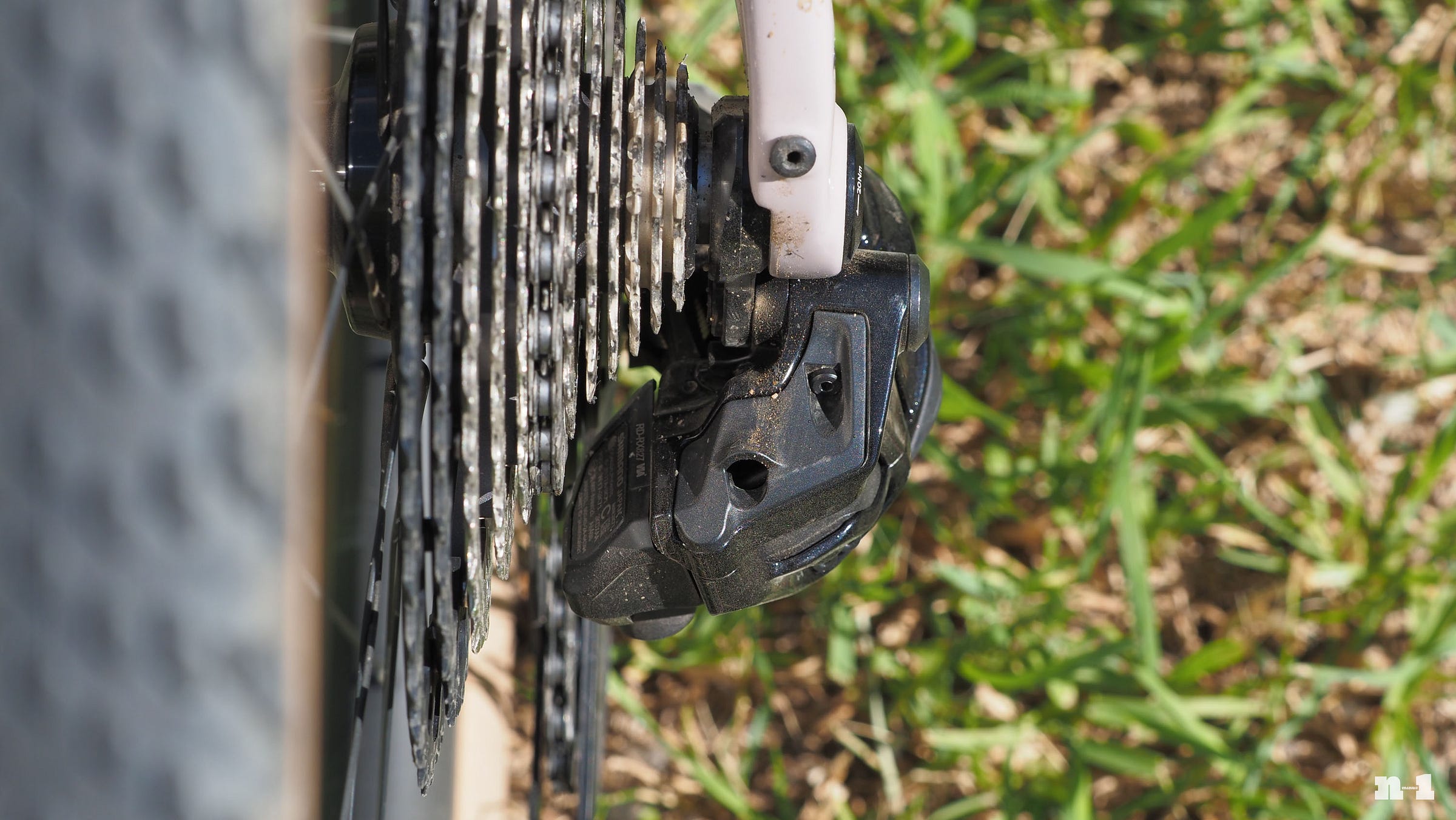
Physically swapping parts took about 20 minutes, and then pairing everything together and tuning the rear derailleur indexing took maybe another ten. Shimano’s e-tube app makes the process as easy as you’d hope, but you can also pair the components to each other with their on-board buttons. Regardless of which way you decide to go, it’s a nice reminder of why so many people have moved to wireless in the first place.
The real eye-opening experience came out on the dirt.
Shifting is lightning-fast for single shifts, but especially so for multiple ones. It’s admittedly not as positive as a SRAM “mullet” setup with a Transmission rear derailleur and cassette, but GRX Di2 1x is just worlds quicker, and perhaps the better option if you prioritize shift speed and your legs are already accustomed to backing off the power for a split-second until the shifts are completed. The difference is genuinely jarring for anyone that hasn’t experienced it before.
The Deore XT cassette offers heaps of range, too – not quite the 520% you get with a SRAM mullet, but 510% is close enough. I prefer the more even progression that Shimano offers, anyway, in contrast to the big jumps at the lower end of the Transmission cassette. Should you not need quite that big of a spread, keep in mind you also have the 10-45T option, whose 450% range lies right in between SRAM’s new and old XPLR groupsets.
The whole drivetrain runs very quietly, too, though there are some caveats. I always strip the factory grease from new chains and switch to a mix of hot and drip wax, not so much for the friction benefits, but more because it keeps the drivetrain so much cleaner (and dramatically extends the part lifespan). Shimano seems to run impressively tight tolerances between its 1x chainrings and chains, though, and I found the drivetrain to be surprisingly sensitive to chain lubrication. If you run the chain even a little bit dry, it noticeably rubs and grinds on the chainring teeth more than other drivetrains I’ve used recently, so keep that bottle of lube handy – and use it regularly.
I kept the existing GRX Di2 levers for my setup, and unless you really want to save that US$250, I’d recommend going that way, too. I reprogrammed my shifters buttons to be more similar to SRAM (as I always do with Shimano Di2-equipped drop-bar bikes), and it’s wonderful to have all those buttons everywhere with no extra thought required when I’m gasping for air. Just smack any of the right-hand buttons for a harder gear, or any of the left-hand ones for an easier one. Shimano unfortunately doesn’t offer wireless remote shifters like SRAM does, but on the upside, the optional wired Di2 satellite buttons are smaller and easier to wrap under tape.
Ergonomically speaking, as much as I really like the latest SRAM E1 levers, I might argue GRX is still better for rougher and more technical terrain. The exaggerated hooks allow for a lighter grip without worrying that your hands might slip, and the hoods are more aggressively textured for more security in wet and/or muddy conditions.
So far, so good, right? Not so fast; let’s talk about that clutch – or rather, the lack of one.
Shimano introduced us all to pulley cage clutches in 2011 when it first debuted the concept on its XTR Shadow Plus rear derailleur. It was a revolution in chain management at the time, and it didn’t take long before it found its way into the rest of Shimano’s off-road lineup – or for the competition to follow suit. As such, I found it awfully curious that Shimano would choose to abandon its baby this time around.
As promised, chain security hasn’t been an issue, even when riding terrain wholly inappropriate for a gravel bike and at wholly inappropriate speeds. And unlike what many have reported with the new wireless Di2 mountain bike parts, chain slap hasn’t been a problem for me, either (though perhaps the larger chainrings typically used on gravel bikes play a part there). That said, I did consistently notice plenty of chain bouncing on nearly every test ride, to the point where I actually felt it through my feet any time I was on rough ground. The chain never fell off, nor did it ever contact the frame, but it was irritating and distracting nonetheless.
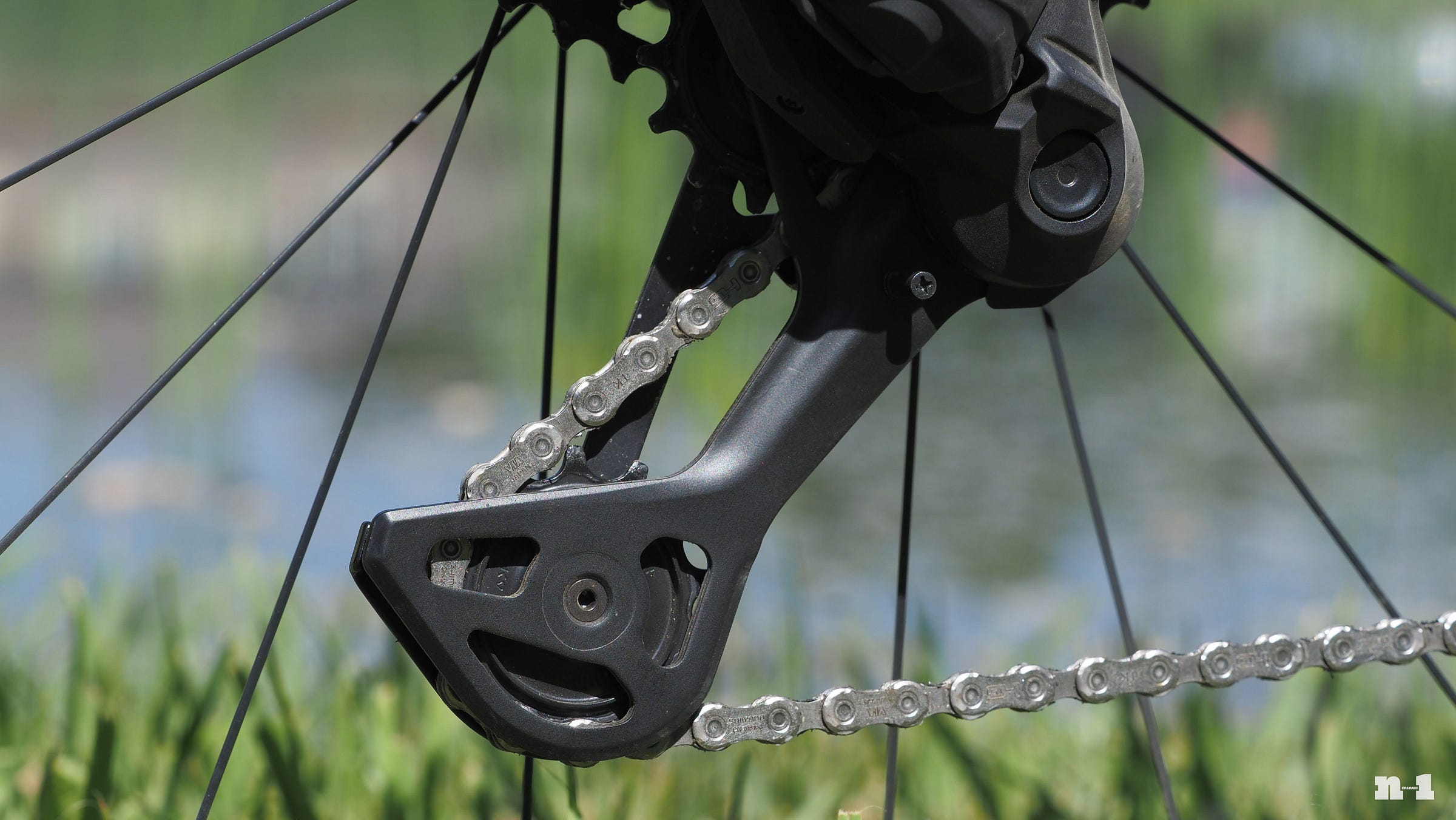
Shimano says the breakaway force of its new dual-spring pulley cage system is about the same as its previous clutch in the factory setting, and when subjectively comparing how much effort is required to move the cage between the new GRX Di2 1x and other GRX rear derailleurs I had available, I’d say Shimano is being truthful. That said, the prolonged chain bouncing I felt with GRX Di2 1x isn’t something I’ve experienced on clutched rear derailleurs – from Shimano, SRAM, or otherwise.
A proper clutch may not actually prevent the lower span of the chain from momentarily sagging on rough terrain any better than this new dual-spring system. However, clutches seem better able to quickly squelch that movement after the initial impact, whereas the dual-spring drivetrain continues to let the chain bounce up and down. I came to see it sort of like mountain bike suspension. Two forks can have the exact same spring preload and spring rates, but if one has damping and the other doesn’t, there’s going to be a profound difference in ride quality. In this case, clutches seem to provide some damping, while with the new dual-spring system, that energy isn’t dissipated as effectively.
I also experienced more chain sagging than usual when back-pedaling at higher speeds – and sometimes even just when quickly transitioning from pedaling at a high cadence to coasting. This is something I’ve dealt with in the past with various drivetrain setups, especially when using a modern mountain bike cassette with its massive amount of rotational inertia. Once that cassette starts spinning, it really wants to keep spinning, and it’s often exacerbated by excessive freehub drag.
But freehub drag wasn’t the issue here. Those RX880 wheels were fresh out of the box and I made sure the bearings were perfectly adjusted. I also swapped with my trusty set of DT Swiss GR 1600 Spline reference wheels, which feature DT Swiss’s lower-drag legacy Star Ratchet driver – and still the same symptoms. To be fair, I was able to replicate this behavior with some other drivetrains that do have a clutch, but at least with Shimano ones, I can increase the clutch tension to make it go away. That’s unfortunately not an option here.
I get the reasoning behind Shimano’s decision here to ditch the clutch, but I don’t agree with it.
Comparison shopping
Riders interested in Shimano’s new GRX Di2 1x drivetrain will likely fall into one of two camps: they’ll either already have GRX Di2 in 2x form but want to ditch the front derailleur, or they’re looking at new bikes (or drivetrain upgrades in general) and cross-shopping with SRAM’s gravel groupsets.
Keep reading with a 7-day free trial
Subscribe to n-1 to keep reading this post and get 7 days of free access to the full post archives.


